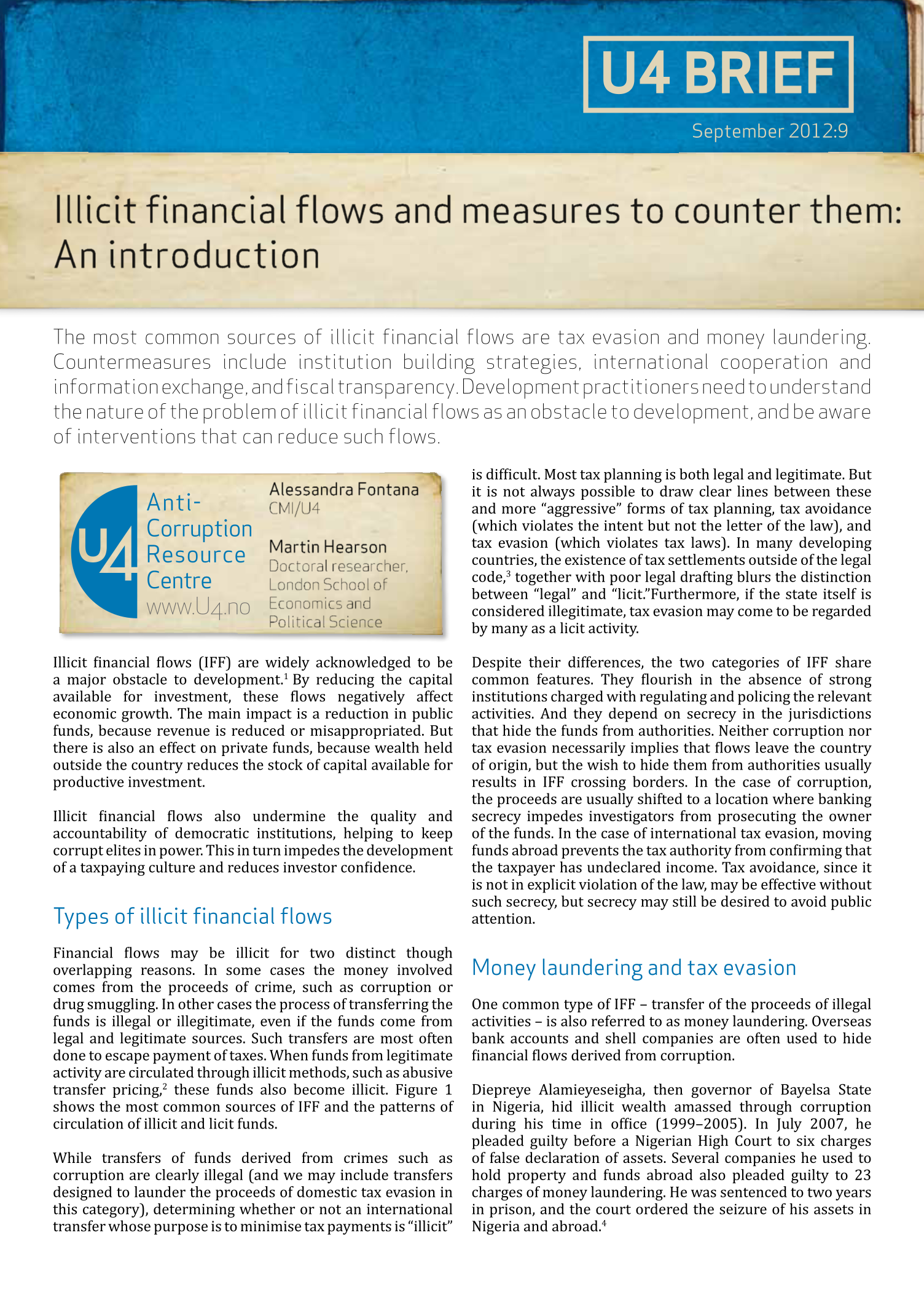U4 Brief
Illicit financial flows and measures to counter them: An introduction
The most common sources of illicit financial flows are tax evasion and money laundering. Countermeasures include institution building strategies, international cooperation and information exchange, and fiscal transparency. Development practitioners need to understand the nature of the problem of illicit financial flows as an obstacle to development, and be aware of interventions that can reduce such flows.

Cite this publication
Fontana, A.; Hearson, M. (2012) Illicit financial flows and measures to counter them: An introduction. Bergen: Chr. Michelsen Institute (U4 Brief 2012:9) 4 p.
Disclaimer
All views in this text are the author(s)’, and may differ from the U4 partner agencies’ policies.
This work is licenced under a Creative Commons Attribution-NonCommercial-NoDerivatives 4.0 International licence (CC BY-NC-ND 4.0)